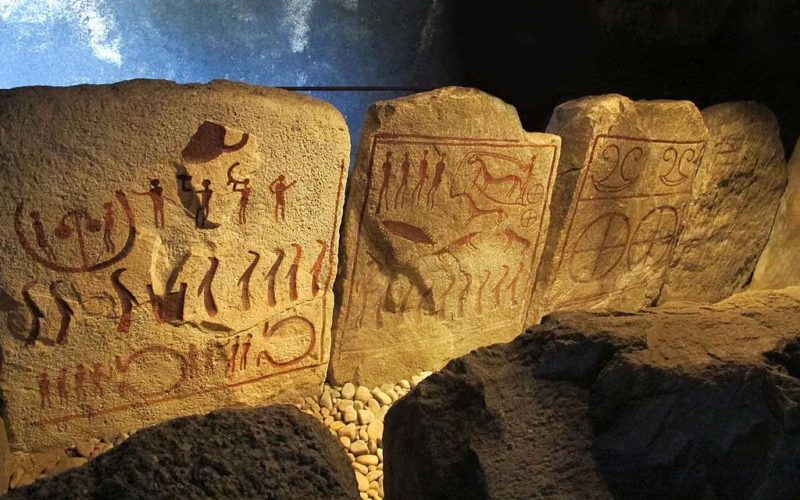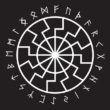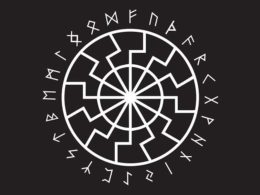Part One of an article that appeared in the British Movement magazine ‘The New Awakening’ issue Number 10. Part 2 and 3 will be appear on this site shortly. Reproduced with thanks.
The symbol immediateley associated with British Movement is the Sunwheel, one of the oldest and most important articles of faith in Aryan religion.
Like other sacred symbols – the Swastika and Life Rune in particular – the Sunwheel has accompanied our ancestors across 5,500 years of European prehistory and throughout all ages: from the great civilisations of remote antiquity down to the present time. Although not a rune as such – predating the original futhark by roughly 2,000 years1 – it is an ideogram of similar magnitude; an expression of spiritual faith and ideologocal concept represented in pictorial form.
It is in this simple conceptual manner we first glimpse a portrayal of millenia past, and gifted an eternal connection to the soil bound spirit of our ancient ancestors.
Image: One of the many memorial stones dating from 1,600 BC which were discovered at Kivik in Sweden in 1749.
Each one stands four feet tall and all have the holy sign of Aryan man displayed centrally.
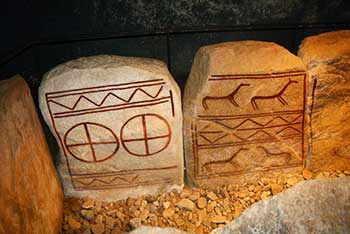
Its ubiquity and importance to pre-Germanic man of the Neolithic to Bronze Age periods confirm the fact that they were, and always had been, a people whose fundamental religion was based on worship of the Sun – but more generally of Nature – with its emphasis on the active, male, and creative aspect, as epitomised by the life-giving Sun.
Essentially, the Sunwheel symbolised man’s reverence of the all-powerful, all-supreme preserver and provider of life.
The spokes of the wheel are representative of the division of the year, the four spokes marking the movement of time; and this was very significant to a folk who relied on agricultural cycles for survival.
Even ‘Yule’ has its origins in the north European word ‘Jol’ which means ‘yoke of the year’ – its literal meaning is ‘wheel’ – when the Sun is at its lowest ebb, but is reborn to regenerate the earth in spring.
On a spiritual level, it is symbolic of the ‘seasons of the soul’; each spoke representing the journey of the soul as it moves through on circle of life to the next; it is a heiroglyph of a revolving, returning generation, of rebirth, of a people awakened and ever striving towards higher consciousness.
Of course, the life-giving force of the Sun was more important to a people living on the edge of Europe’s ice sheets than it was for those in less harsh climes; hence, Germanic indulgence of the cosmos was long established when the first wave of Aryan rovers began their wanderings more than 4,000 years ago.
They were already skilled craftsmen and intrepid explorers by this time, and would scatter symbolism of the Sunwheel wherever they roamed. As these yeoman-warriors spread further afield they took their laws, traditions and values with them, becoming masters of every land they ventured.
From Greenland to Greece the Sunwheel was carved in rocks as an expression of their faith, and inscribed on commemorative monuments dedicatory of their heritage.
They were a race on the move, Nordic, active, patriarchal and dominating. Their spiritual focus was upwards and outwards; towards the sky and the horizons. They were a soil bound spirit far less concerned with the passive outlook of people in the lands conquered, only with valour, honour and authority.
Nevertheless, they did not consider the worship of any particular god to preclude veneration of another; other folk could pray to their own deities so long as the Norse could worship theirs, basically. However, it was not a consideration always afforded to them.
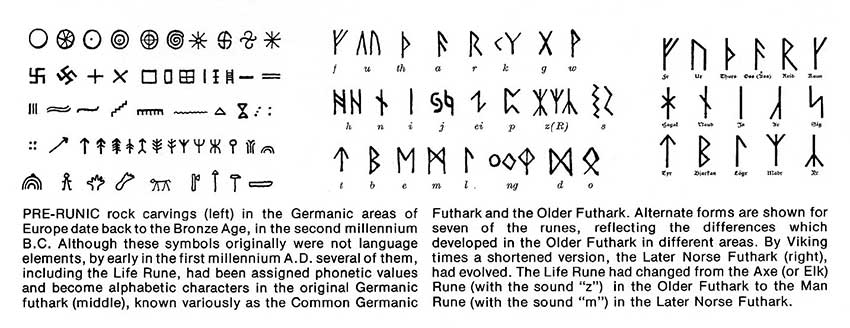
Coming Soon – Part Two: The First Millennium AD.






